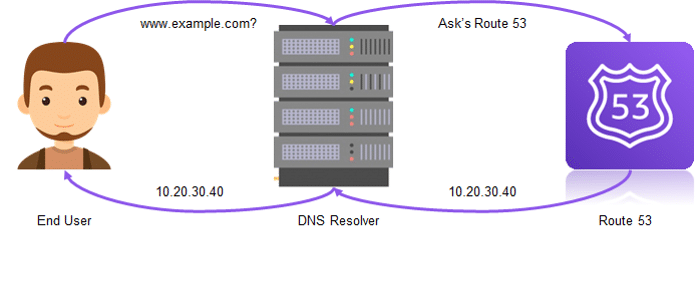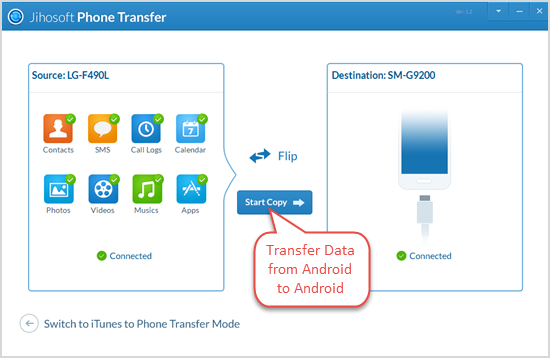
Ports are essential for computers to be able to transmit and retrieve data over the internet. Ports are used for file transfers and to allow the computer's access to external hardware such as printers. They are also the mechanism for recognizing and understanding data being transferred from one device to another.
Ports can either be physical or virtual. The motherboard or socket is where physical ports are located. Virtual ports can only be created by software. These ports can be used by router and computer software to share resources such memory and processors. When a program uses a virtual port, the operating system manages the flow of network traffic. It may be possible to add an additional port to the motherboard by inserting an expansion card.
Ports do not always offer greater security than other data transfer methods. They are more efficient at connecting devices and communicating with them. The number of ports on a computer depends on the number of applications running on the machine. There are many different types of ports. Each serves a specific purpose. Some ports can only be used for specific protocols while others are available for all applications.

Computers communicate over the network using a set of standard protocols. This includes Transmission Control Protocol, User Datagram Protocol and Hypertext Transmit Protocol (HTTP). Each protocol comes with well-known ports for data transfer. A web server, for example, will send all HTTP requests to port 80. A file transfer program, in the same way, will also bind to port 21.
You can also use ports to identify an application being run on a specific machine. An application's port number can be found in the operating system, or it can be assigned automatically by the computer's hardware. Because not all applications work the same, it is important that you use a port to identify your application.
A port is usually 16-bit unsigned integer numbers. Every computer application has a unique port. But it isn't unusual for a computer with more than one port open. A computer's operating system might assign a port to one application, or it could choose one for a service.
As the Internet expands, so does the need for network port. Globally, there are currently 65.535 TCP port numbers. Historically, the most common services have been identified by the lowest-numbered ports, while the highest-numbered ones are available for use by general applications. Because the address space is shrinking, IPv4 has been replaced with IPv6.

A computer cannot function without network ports. However, they do help the computer understand the information being transferred to and from other hardware. The computer can therefore be used for multiple purposes without the need to purchase additional hardware.
Remote access is one reason to use a port. Remote access is possible by using a port forwarding technique. In this method, a device can be connected to a computer remotely and its IP address is accessible to other computers within the same local area network. Remote Desktop Protocol allows remote access to desktop computers.
FAQ
What is a responsive design web design?
Responsive Web Design, also known as RWD, is a way of designing websites so that content displays on all devices. This includes desktop computers, tablets (tablets), smartphones, etc. This allows users to simultaneously view a website from one device while still being able to access other features, such as navigation menus and buttons. RWD's goal is to ensure that users view the exact same version of a website on every screen size.
You would, for example, want to make sure that a customer can view your website even on a mobile device.
A responsive site will adapt to the device used to view it. Your laptop will view the website exactly as a normal desktop site. But, the page will appear differently if you view it on your phone.
This means that you can create a single website that looks great on every type of device.
Web development is hard?
Web Development is not easy, but if you have a passion for coding, there are many online resources that can help you learn how to code.
The only thing you need is to search for the right tools and follow their steps step by step.
YouTube and other platforms offer many tutorials. Online software like Sublime Text and Notepad++ is also available for free.
Books can also be found in libraries and bookstores. Some of the most popular ones include:
O'Reilly Media's Head First HTML & HTML
"Head First PHP & MySQL 5th Edition" by O'Reilly Media
Packt Publishing - "PHP programming for absolute beginners"
I hope this article helped you.
What is a "static website"?
A static site can be hosted anywhere. This includes Amazon S3, Google Cloud Storage. Windows Azure Blob storage. Rackspace Cloudfiles. Dreamhost. Media Temple. You can also deploy static sites to any platform that uses PHP, such WordPress, Drupal Joomla! Magento PrestaShop.
Because they don't send requests back and forth between servers, static web pages are easier to maintain. Also, they load faster because there's no need to send any requests back and forth between servers. For these reasons, static web pages are often better for smaller companies that don't have the time or resources to manage a website properly.
What is a "static website"?
A static site is one that stores all content on a server. Visitors can access the website via web browsers.
The term "static” refers the fact that there is no dynamic feature such as changing images or video, animations etc.
This site was initially designed for corporate intranets, but it has been adopted by individuals or small businesses who desire simple websites that don't require complex programming.
Static sites have become increasingly popular because they require less maintenance. They are simpler to update and maintain than fully-featured websites that have many components (like blogs).
They load much faster than dynamic counterparts. This makes them ideal for users on mobile devices or those with slow Internet connections.
Additionally, static websites are safer than dynamic sites. A static website is impossible to hack. Hackers have only access to data stored in a database.
There are two main options for creating a static website.
-
Using a Content Management System (CMS)
-
Create a static HTML website
The best one for you will depend on your specific needs. A CMS is the best choice for anyone who is new to building websites.
Why? Because it allows you to have full control over your website. You don't need to hire someone else to help you set it up. Upload files directly to the CMS.
You can still learn code and create static sites. It will take some time to learn to program.
Which platform is best for designing a website?
WordPress is the best platform when it comes to designing websites. It offers all the features that you need to build a professional-looking website.
Themes can be easily customized and installed. There are many themes to choose from online.
Plugins are another way to add functionality. They can do everything, from adding social buttons to creating contact pages to adding forms.
WordPress is very user-friendly as well. To modify your theme files, you don't need to be able to code HTML. All you need to do is click on an icon and select what you want to change.
There are many other platforms available, but I recommend using WordPress because it's been around for years and is still used by millions worldwide.
What Is Website Design Software?
Website design software is used by graphic artists, photographers, illustrators, writers, and others involved in visual media to create webpages and other digital materials.
There are two types of website design software available: cloud-based and desktop apps. Desktop apps are installed locally on your computer and require you to install additional software on your computer. Cloud-based apps are hosted remotely on the Internet and do not require any additional software. This makes them perfect for mobile users.
Desktop Applications
Although desktop applications are more powerful than those offered by cloud-based services, they may not be necessary. Some people prefer working exclusively on a desktop app, as they find it easier. Some people prefer to use the same tool, regardless of whether it is on a phone or a laptop.
Cloud-Based Solutions
Web designers who want to save time and money should choose a cloud-based solution. These services allow you access any type of document to be edited from anywhere on the internet. This allows you to use your tablet while waiting for your coffee maker to brew.
If you decide to use a cloud service, you will still need a license. You won't need to purchase additional licenses if you upgrade to a later version.
These programs are available for web page creation if you have Photoshop or InDesign, Illustrator, and other Adobe products.
How To Make A Static Web Site
There are two options for creating your first website:
-
Content Management System (a.k.a. WordPress): WordPress is available as a download. You can then use it to build an important website.
-
You will need to create a static HTML website. If you are familiar with HTML, it's easy to do.
A professional may be able to help you create a large website.
You should start with option 2.
Statistics
- Studies show that 77% of satisfied customers will recommend your business or service to a friend after having a positive experience. (wix.com)
- It's estimated that in 2022, over 2.14 billion people will purchase goods and services online. (wix.com)
- It enables you to sell your music directly on your website and keep 100% of the profits. (wix.com)
- The average website user will read about 20% of the text on any given page, so it's crucial to entice them with an appropriate vibe. (websitebuilderexpert.com)
- Is your web design optimized for mobile? Over 50% of internet users browse websites using a mobile device. (wix.com)
External Links
How To
What is website hosting?
Website hosting refers simply to the place that people visit when they visit a website. There are two types of website hosting:
-
Shared hosting is the cheapest. Your website files will reside on a server belonging to someone else. When customers visit your site, their requests travel over the Internet to that server. You then receive the request from the owner of the server.
-
Dedicated hosting: This is the most costly option. Your website is only accessible from one server. Your traffic is private because no other websites have shared space on this server.
Shared hosting is cheaper than dedicated hosting for most businesses. Shared hosting allows you to have your website run by the company who owns the server.
However, both have their advantages and disadvantages. These are the key differences between them.
Shared Hosting Pros
-
Lower Cost
-
It's easy to set up
-
Frequent updates
-
It can be found at many web hosting providers
You can get shared hosting for as low as $10 per monthly. But keep in mind that this price usually includes bandwidth. Bandwidth refers the data that you can transfer over the Internet. You may have to pay extra for large amounts of data, even if your blog only contains photos.
Once you start, you'll quickly realize why you were paying so much for your previous host. Most shared hosts have very poor customer support. Although their techs may help you with setting up your site, it's not a common practice.
Providers that offer 24-hour customer support are worth looking into. They will attend to any issues you have while you sleep.
Cons of dedicated hosting
-
More Expensive
-
Less is More
-
Requires special skills
With dedicated hosting, everything you need for your website is at your fingertips. You won't have worry about whether your website is using enough bandwidth, or whether it has enough RAM (random-access memory).
This means that upfront, you'll need to spend a bit more. However, once you start running your business online, you'll find that you won't need much technical assistance. You'll be able to manage your servers effectively.
Which Is Better For My Business:
The answer depends on what kind of website you want to create. Shared hosting might be best if you just want to sell products. It is simple to set up and easy to maintain. And since you're sharing a server with many other sites, you'll likely receive frequent updates.
However, dedicated hosting is the way to go if you want to build a community around your brand. You can focus on building your brand without worrying about handling your traffic.
Bluehost.com is a web host that offers both. They offer unlimited monthly data transfers, 24/7 support, free domain name registration, and a 30-day money-back guarantee.